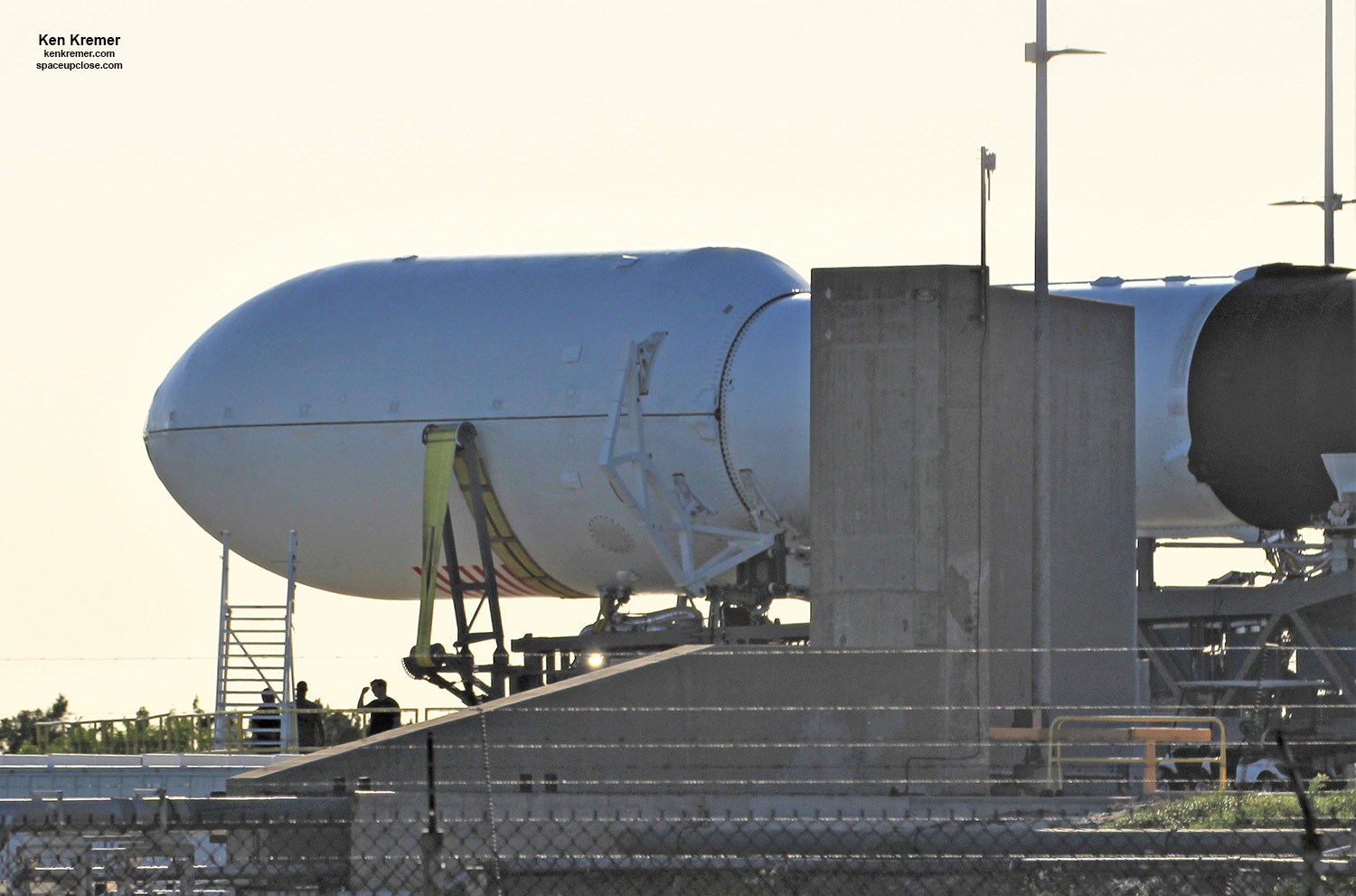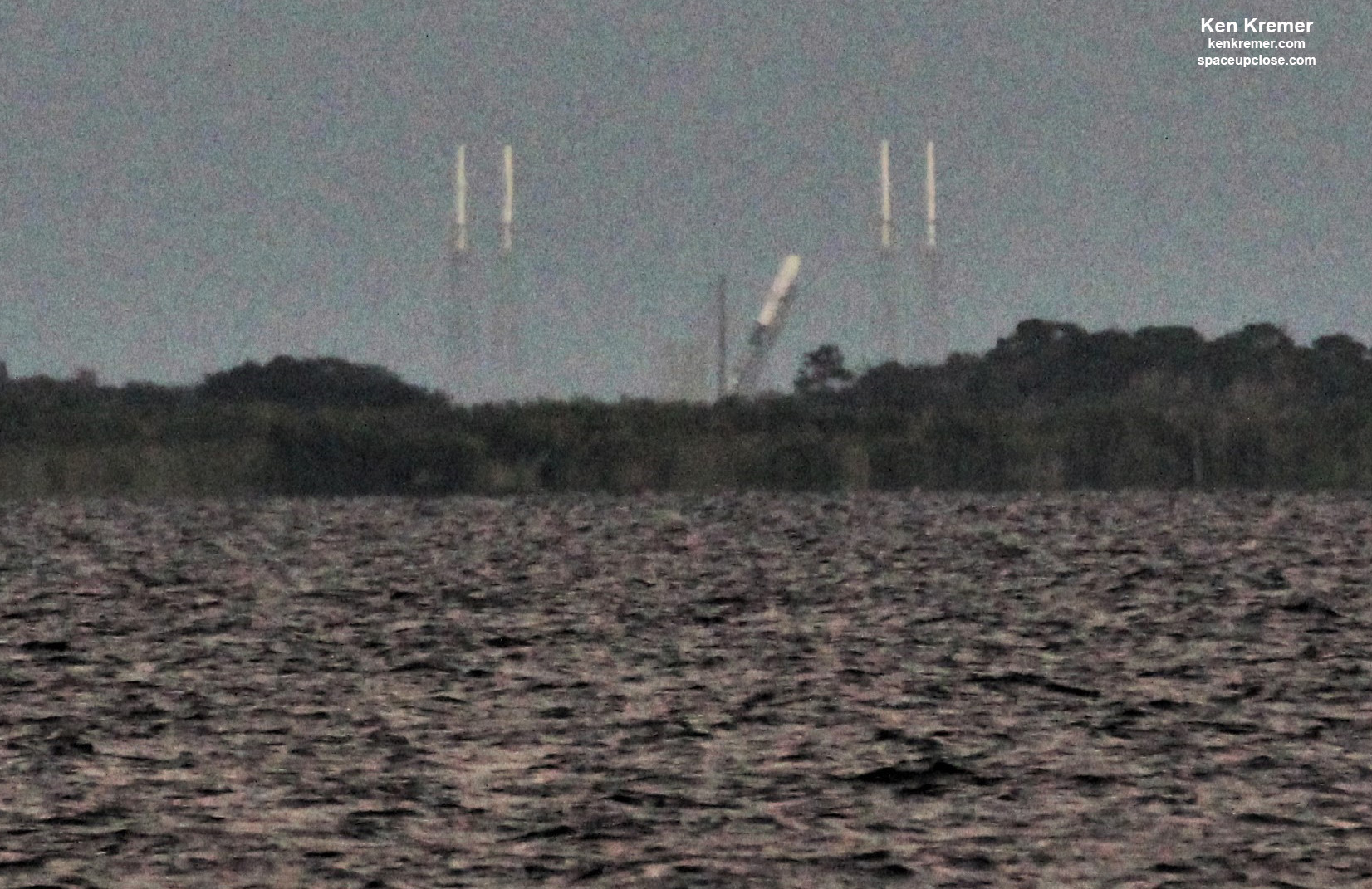
For SpaceUpClose.com & RocketSTEM
TITUSVILLE, FL- The SpaceX Falcon 9 went vertical at sunset and moonrise Sunday evening on the Florida Space Coast, Nov 10 in anticipation of the Veteran’s Day Monday, Nov. 11 launch of the next batch of 60 Starlink broadband satellites under very special ‘flight-proven’ circumstances – wherein it’s the first time the recovered first stage launches for the fourth time and it’s the first time a launch includes recovered and reused payload fairings.
Falcon 9’s first stage previously supported the Iridium-7, SAOCOM-1A, and Nusantara Satu comsat/Beresheet moon landing missions.
Both of the the payload fairing halves encapsulating the 60 Starlink satellites are recycled from being previously flown on the Falcon Heavy Arabsat-6A mission earlier this year on April 11 that was recovered after use by plucking them from the saly, corrosive ocean waters off Florida’s east coast.
Thus the Starlink mission marks a truly major milestone in space history.
And the weather outlook is quite positive too!
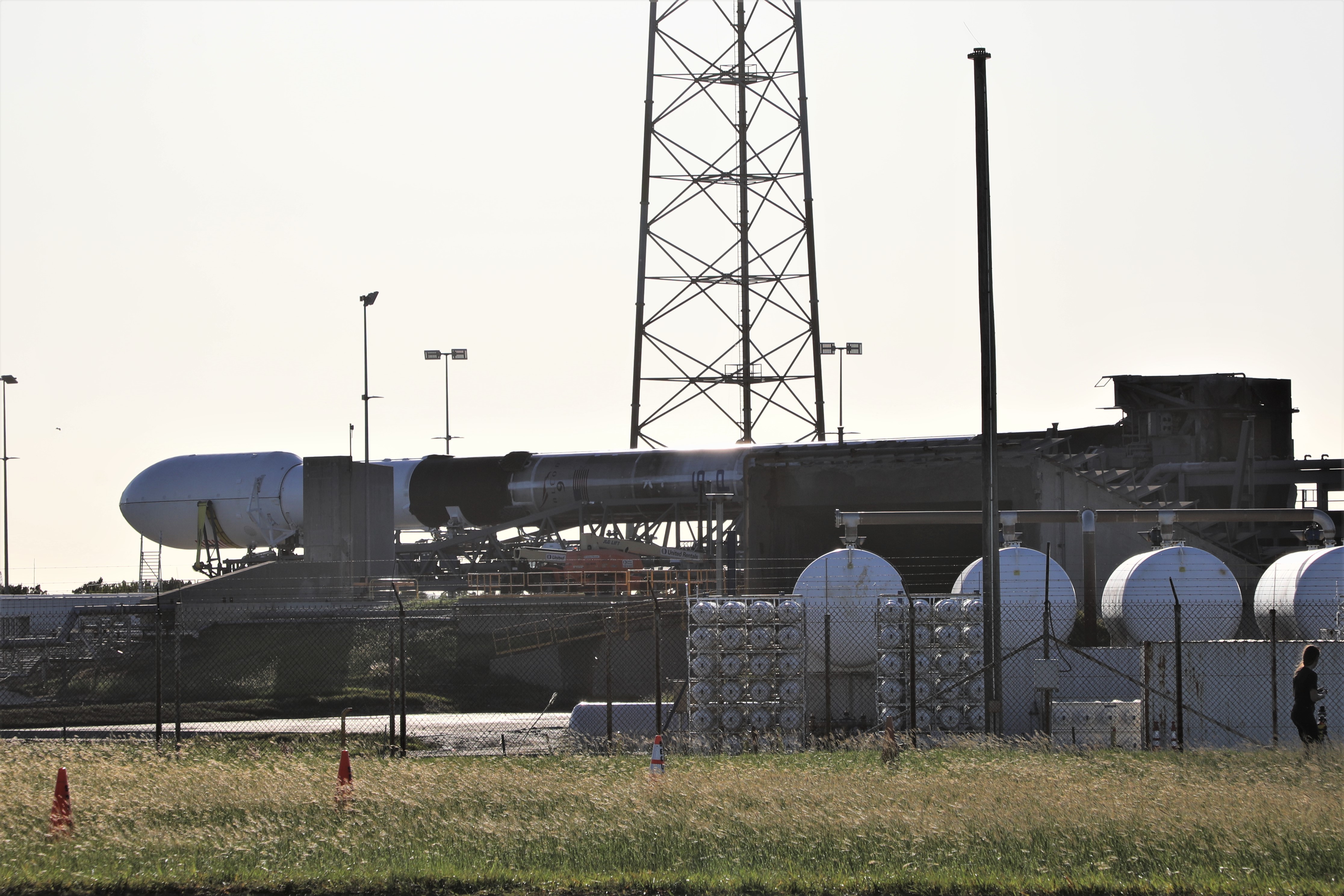
SpaceX engineers raised the full Falcon 9 stack starting around 5:20 p.m. EST using the transporter-erector (TE) out a pad 40 – as I watched from across the Indian River in Titusville about a dozen miles away
See my photos here.
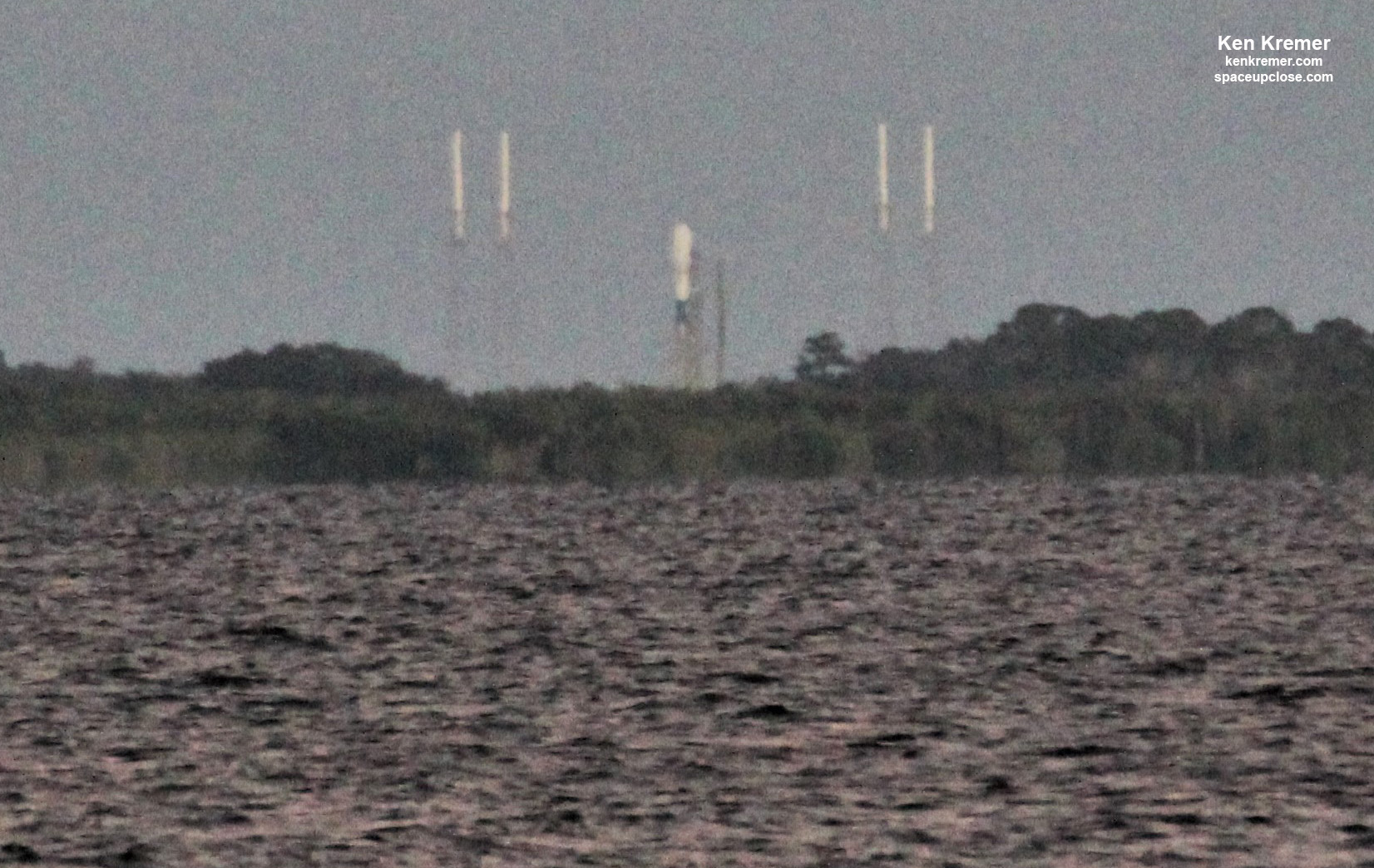
Altogether it took a roughly 20 minute period for Falcon 9 to ‘Go Vertical.’
Engineers erected the Falcon 9 very shortly after we media had set up our remote cameras and departed the pad.
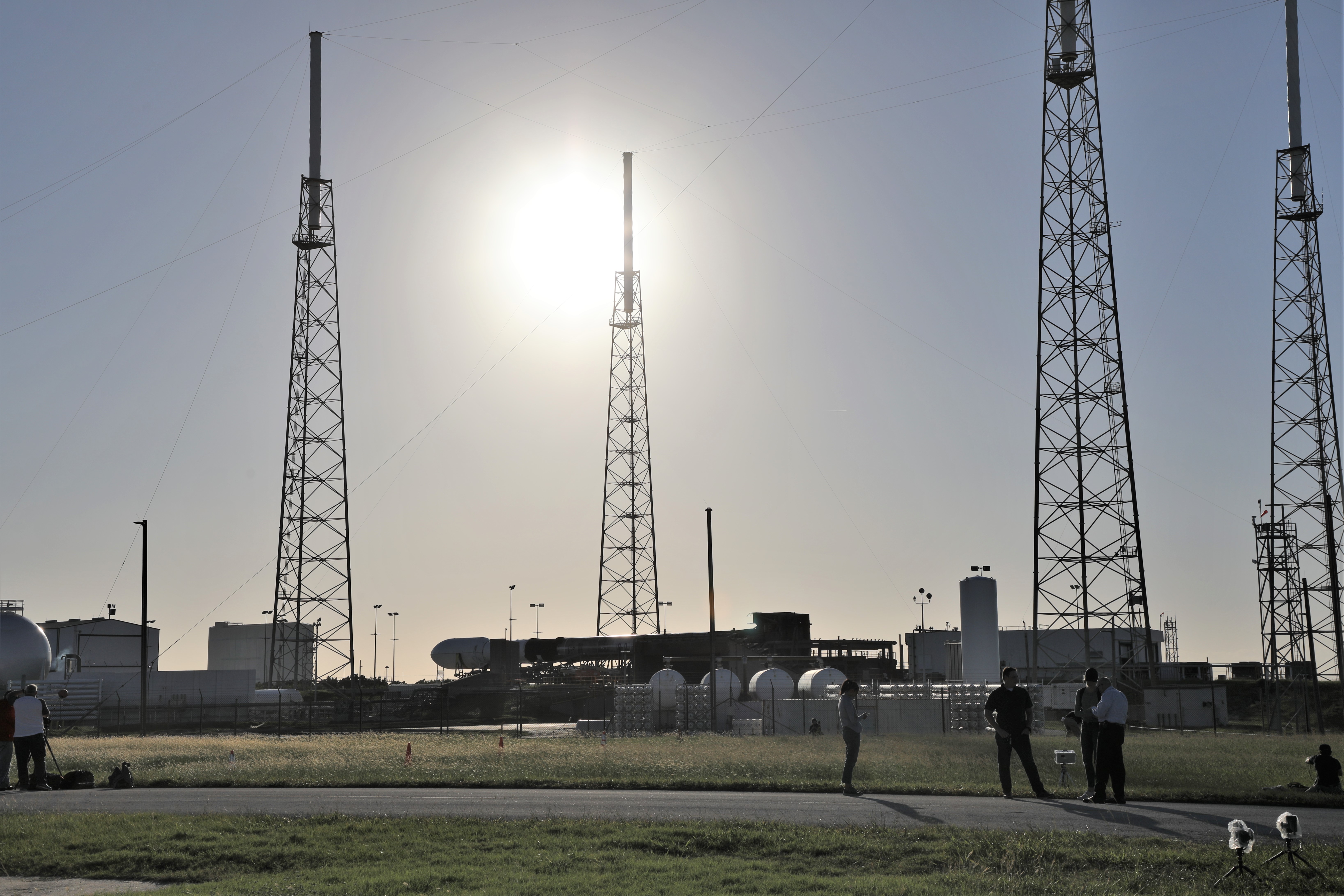
Enjoy our Space UpClose photos of the SpaceX Falcon 9 both from upclose a few dozen feet away while it sat horizontal at Space Launch Complex-40 late this afternoon and more distantly from across the river in Titusville after sunset.
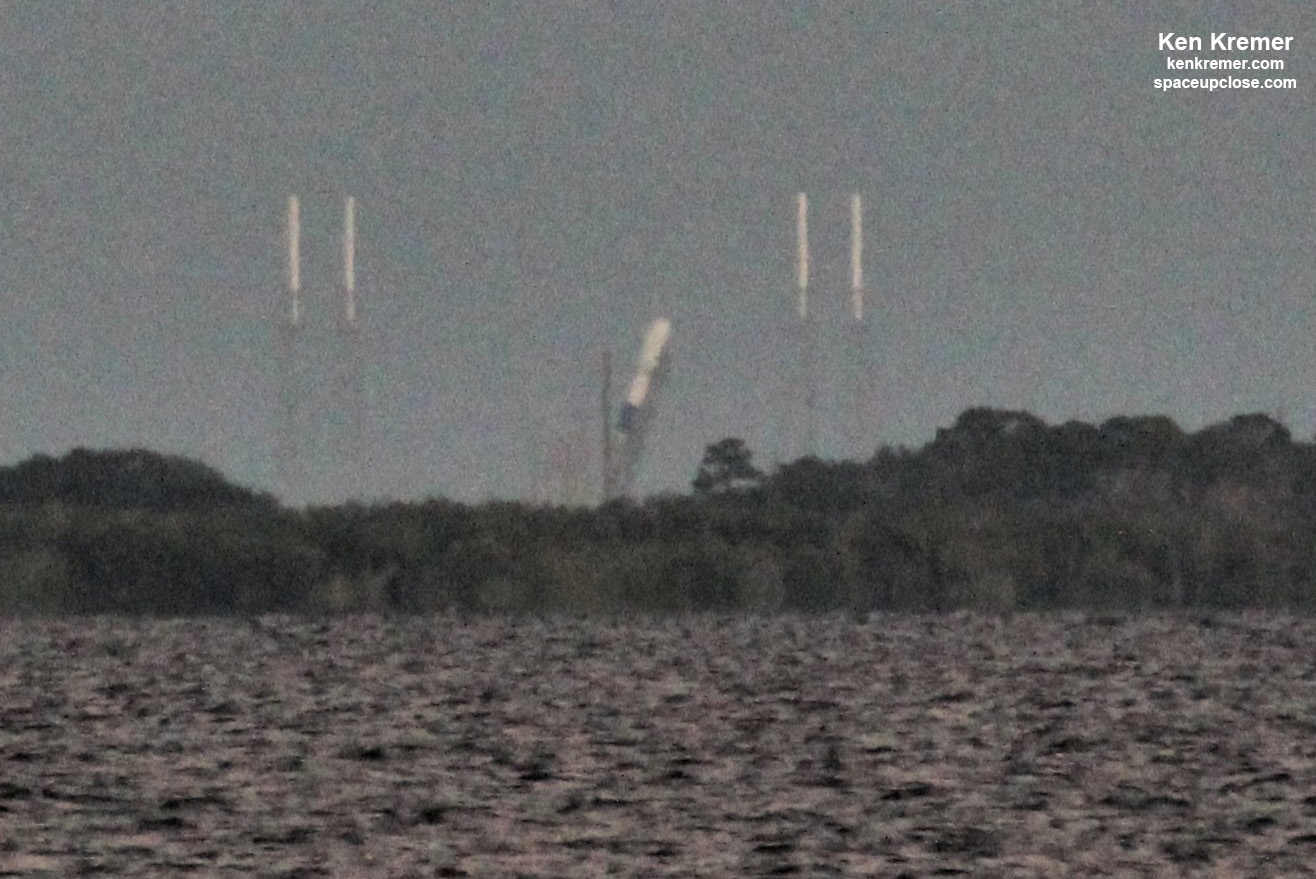
Liftoff of the Starlink mission is now targeted for 9:56 a.m. EST (1456 GMT) Monday, Nov 11 from Space Launch Complex-40 (SLC-40) on Cape Canaveral Air Force Station, FL.
The 11-minute launch window extends to approximately 10:07 a.m. EST.
You can watch the launch live via SpaceX webcast
To watch SpaceX’s live launch webcast, starting about 15 minutes before liftoff, or to learn more about the mission, visit spacex.com/webcast.
In case of any delays for weather or technical reasons a backup launch opportunity exists on Tuesday.
Liftoff time moves slightly earlier to 9:34 a.m. EST (14:34 GMT) on Tuesday, November 12.
The weather outlook is very promising.
Air Force weather forecasters with the 45th Space Wing on Cape Canaveral Air Force Station predict an 80% chance of favorable conditions at launch time.
To confirm that the heavily reused Falcon rocket parts are ready and robust for launch SpaceX engineers completed a lunchtime static fire test of their Falcon 9 1st stage boosters engines a few days ago on Tuesday, Nov. 5 on Cape Canaveral.
See our photos here.
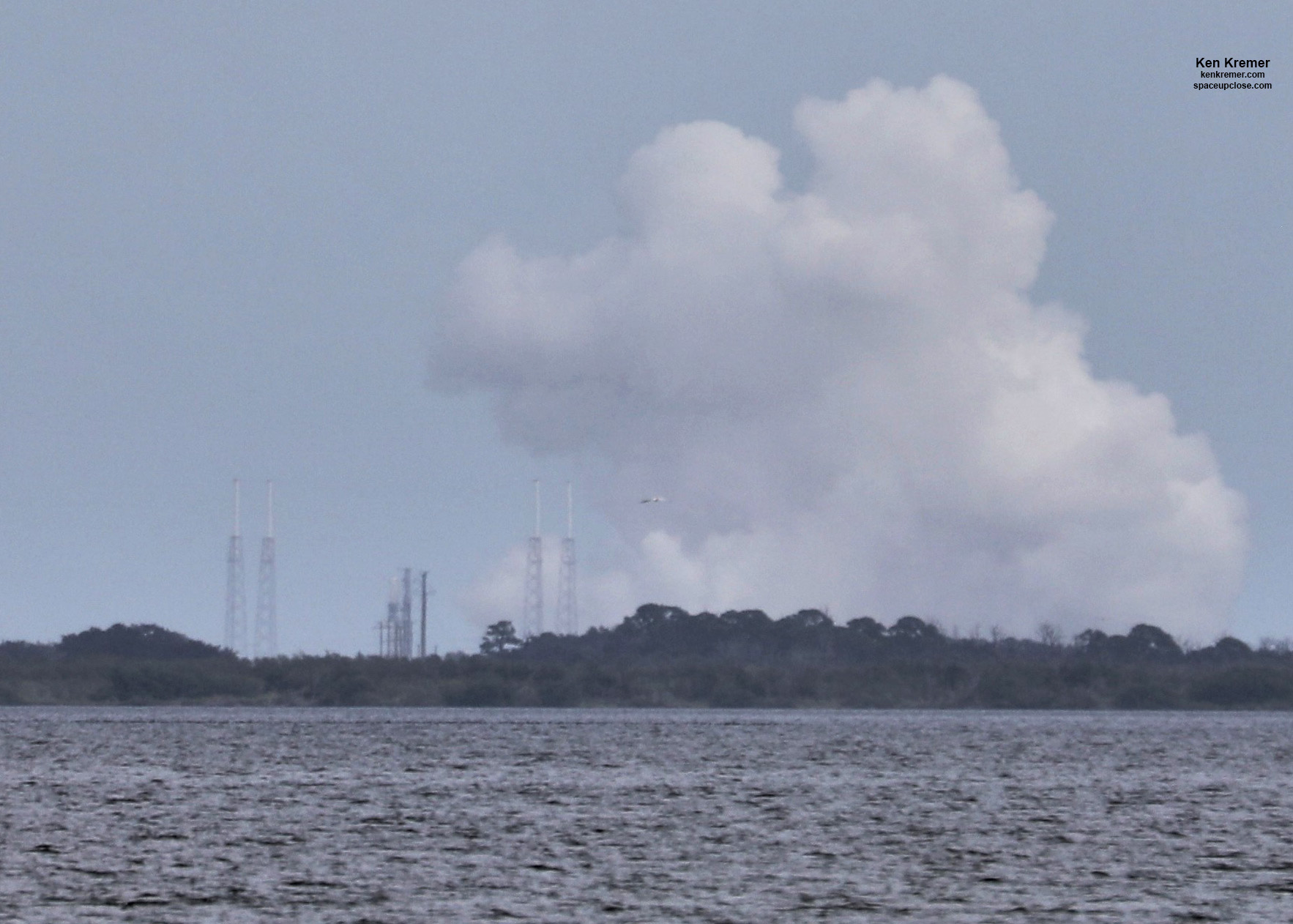
Only the Falcon 9 2nd stage is not being reused here for the Starlink mission and SpaceX CEO Elon Musk has had his engineers working on that feat too.
Thus the Starlink mission marks a truly major milestone in space history.
The rocket hardware recovery, recycling and reuse is all done by CEO Elon Musk and team in the name of driving down the high cost of access to space and thereby simultaneously cast expand our access.
SpaceX has relaunched several recovered 1st stage boosters on a third mission to space.
SpaceX CEO Elon Musk has made rocket recycling a top priority in order to slash launch costs.
Musk says that the fairings cost approximately $6 million or roughly 10% of the approximate cost of $60 million for a new Falcon 9 rocket.
Notably SpaceX is risking only their own satellites for this first time mission with reused fairings and boosters.
SpaceX will attempt to recover both these fairings and booster as well.
SpaceX naval fleet now includes 2 fairing recovery ships outfitted with giant nets to attempt to catch both halves some 733 km downrange before they splash into the Atlantic approximately 45 minutes after liftoff – namely GO MS TREE and GO MS CHIEF.
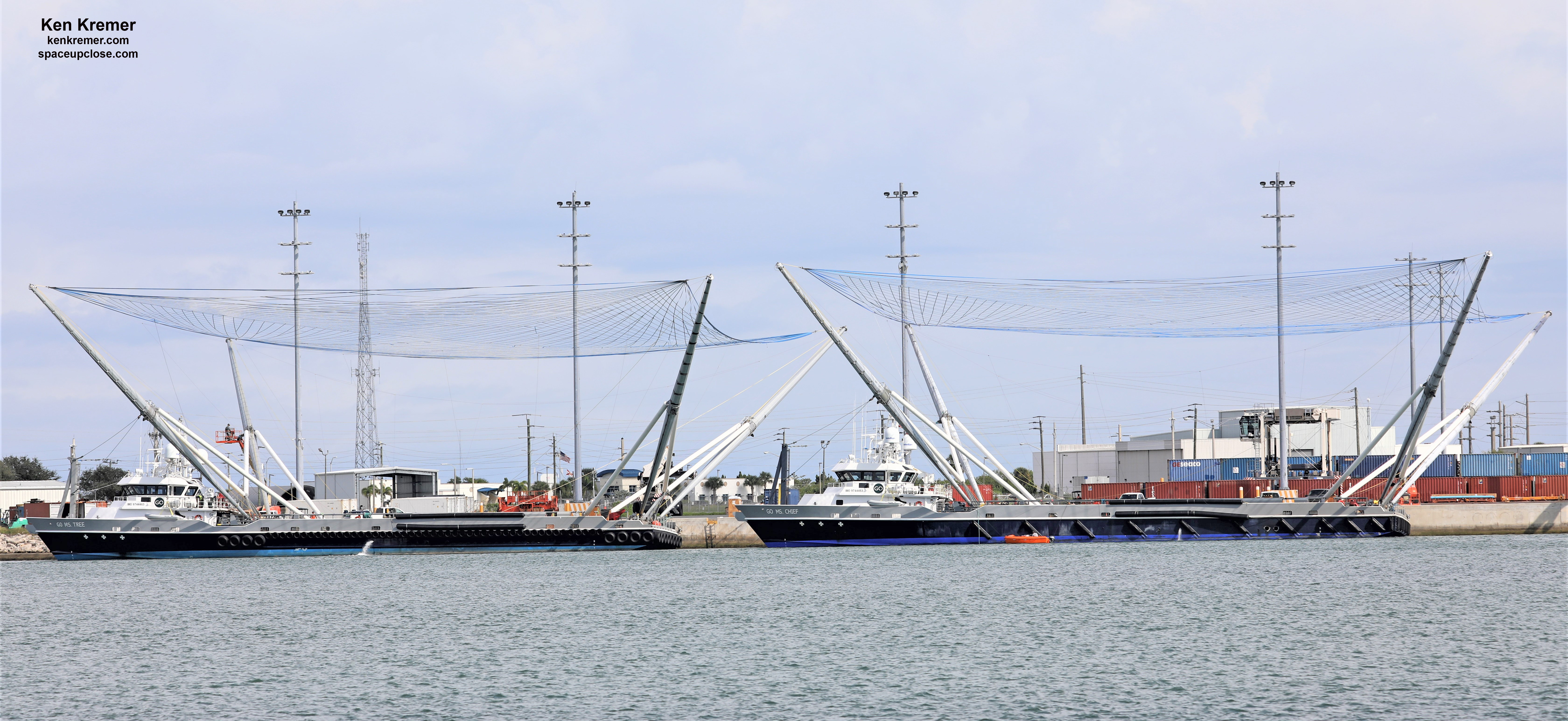
SpaceX has deployed the “Of Course I Still Love You” (OCISLY) droneship to attempt a soft landing of the first stage booster some 628 km downrange in the Atlantic Ocean.
If all goes well these 60 new Starlink satellites join the first batch of 60 launched in May.
The Starlink satellites begin deployment about 60 minutes after liftoff.
“Starlink is a next-generation satellite network capable of connecting the globe, especially reaching those who are not yet connected, with reliable and affordable broadband internet services,” says SpaceX.
The Starlink satellites are manufactured by SpaceX – as well the rockets.
The constellation could eventually number over 20,000 or more satellites in low earth orbit.
“The Starlink satellites will deploy at an altitude of 280 km. Prior to orbit raise, SpaceX engineers will conduct data reviews to ensure all Starlink satellites are operating as intended. Once the checkouts are complete, the satellites will then use their onboard ion thrusters to move into their intended orbits.”
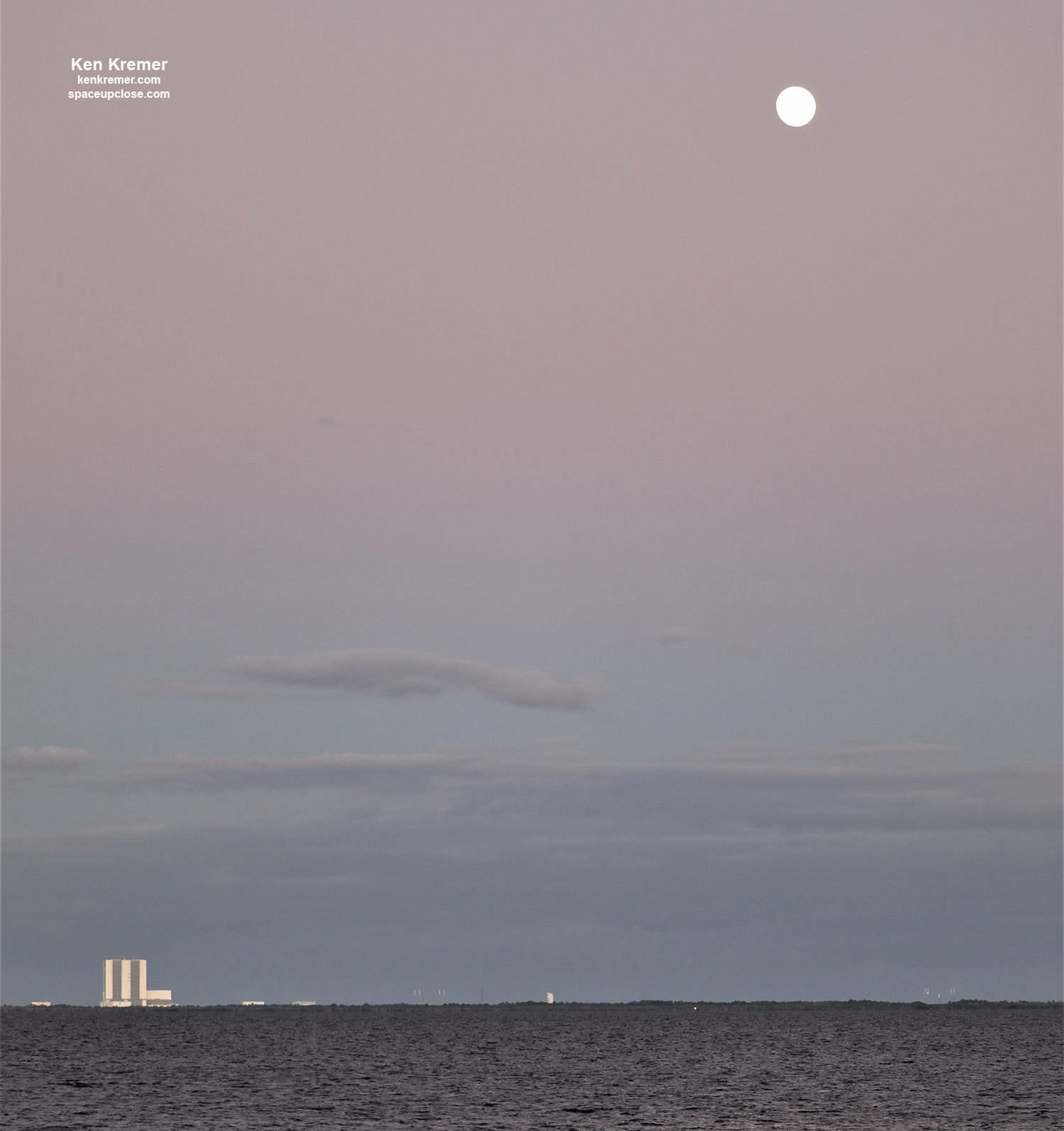
This marks the first launch by SpaceX since August 6 and will be their 11th of 2019.
The two stage Falcon 9 rocket stands 229 feet (70 meters) tall.
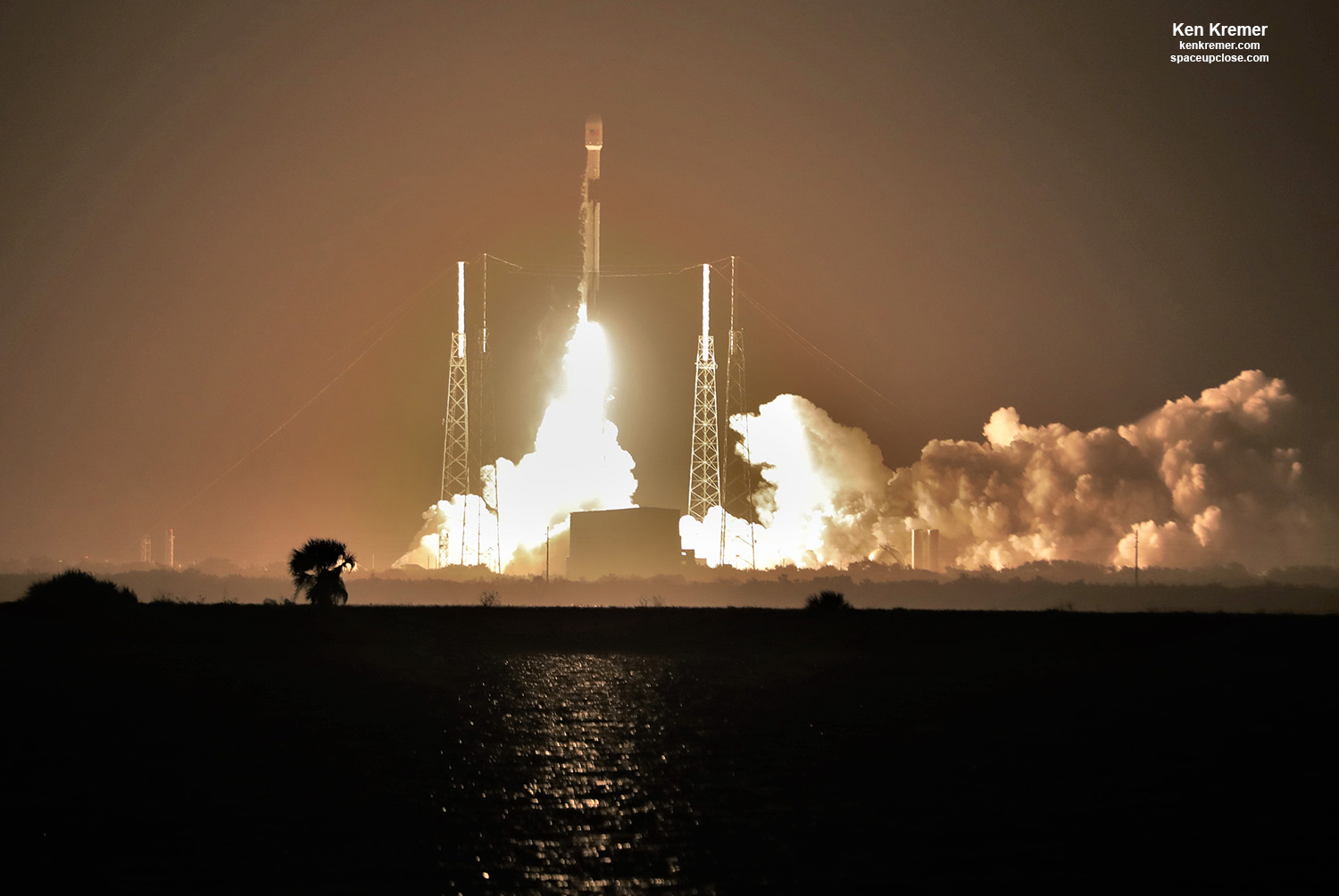
Stay tuned here for Ken’s continuing Earth and Planetary science and human spaceflight news: www.kenkremer.com –www.spaceupclose.com – twitter @ken_kremer – email: ken at kenkremer.com
Dr. Kremer is a research scientist and journalist based in the KSC area, active in outreach and interviewed regularly on TV and radio about space topics.
………….
Ken’s photos are for sale and he is available for lectures and outreach events
Ken’s upcoming outreach events:
Nov 10: 7 PM, Quality Inn Kennedy Space Center, Titusville, FL. “SpaceX Starlink Launch Nov 11.” Free in hotel lobby
Nov 23, 1 PM, Titusville, FL: “50th Anniversary Apollo 12 and NASA’s Human Return to the Moon with Project Artemis” at American Space Museum, Titusville, FL. Lecture free. Open to the public.
Website: www.spacewalkoffame.org
www.spacewalkoffame.org/event/cosmic-christmas-yard-sale-and-apollo12-50th
